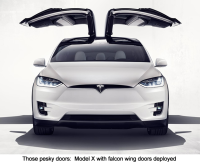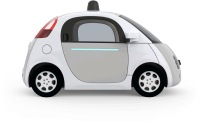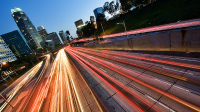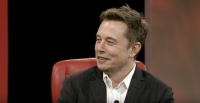
Let’s talk, again, about business, about technology and about the future.
Let’s talk about Tesla.
I like Tesla. Most business analysts don’t. But I admire Elon Musk. I even think he’s right to buy SolarCity.
But I think the namesake product has a limited runway. Here is why.
The story of the Tesla car is a three-legged stool.
- There’s the electric angle. Don’t just save the planet, but recycle energy from the Sun, through the battery. Just as important, deliver a car with far fewer moving parts, so it won’t wear out. An electric motor has very few moving parts. A Tesla car is basically a drivetrain. If you replace the batteries, keep the drivetrain maintained, and change things like tires and wiper blades you’re good.
- There’s the performance angle. The Tesla’s electric motor can deliver enormous power to the drivetrain quickly. Its “ludicrous speed” goes from zero to 60 in nothing flat. The sleek design screams sports car. This is a car that has always been compared to high-end luxury vehicles, or sport vehicles, and has won in that niche. It’s had to compete there to justify its price.
- There’s the self-driving angle. Musk promises that you can ignore the car in a few years, and for now just keep an eye on it as you go down the road under the control of your GPS. It will avoid collisions and go where you want it to go.

Self-driving is the only aspect of Tesla’s vision that does scale, in the 21st century sense of the term. It’s software. Software can be instantly replicated and updated through a cloud. So long as the client can run it, we’re good. Hardware can be updated through a module – you don’t have to get a new car. Electric motors, drivetrains, and bodies only scale as manufacturing scales. There is a limit to the speed with which even a production line of robots can operate. Performance, of course, does not scale at all, because performance must interact with low-performing products.
But what happens as self-driving scales?

Another thing that happens as self-driving scales is that distance and time become less relevant. If the time you spend in a car is no longer lost time, since you have full access to communication as the car does, and you don’t have to put your full attention on what the car’s doing, then why do you have to live so close to your job? If commuting time is no longer lost time, then so long as you are as comfortable within the car as you might be at your desk, it can be an extension of that desk, and you can literally live where you want. Maybe some people will be on the road most of the time, making the car their home. More likely, people will just engage in longer commutes.

This reverses the urban development trends I’ve been benefitting from over the last decade, and makes a profound difference in our politics. Suddenly, TechLand people can live in Trumpistan, outvoting the Trumpistanis. Over time there will be enormous tension over this fact, but it’s as inevitable as suburbanization itself was.
The design of today’s Tesla car is that of a roadster. A Tesla is designed to be driven. As self-driving scales, cars won’t be designed around the driver any more. They will be designed around the passenger. What will matter is how much of the office or living room can travel with the commuter, or how much storage the car can accommodate, how many passengers?

Costs will customize cars. If I’m going on a shopping trip, or to a recycling center, or to the woods, then I’m going to get a car with more capacity for taking people and things with me. That trip will cost more than my individual trip to the doctor, or to the office. Different cars for different purposes, rather than different people.
Where does Tesla fit into this world? When cars become utilitarian, when they become verbs instead of nouns, where does Tesla live? SolarCity makes sense, Tesla as a parts company, assembly yard, and repair system makes sense.
But the Tesla cars being made in 2016 make very little sense, except as collector’s items.
That’s why I don’t own Tesla stock. Because the company is not ready for a Tesla world.










A computer malfunction, even just a minor glitch, could cause worse crashes than anything that human error might bring about.
If the car crashes, without a driver, who’s fault is it: Google/the software designer, or the owner of the vehicle?
A computer malfunction, even just a minor glitch, could cause worse crashes than anything that human error might bring about.
If the car crashes, without a driver, who’s fault is it: Google/the software designer, or the owner of the vehicle?
https://www.uwinatozshop.com/
https://www.uwinatozshop.com/